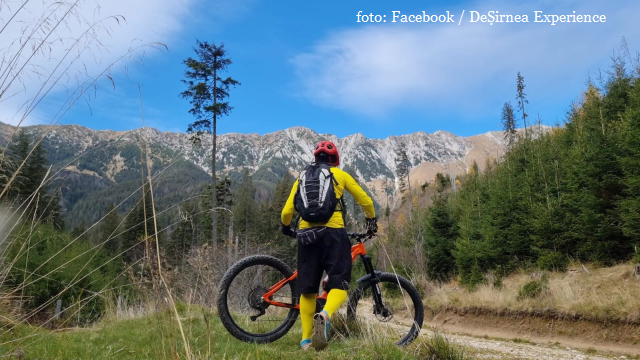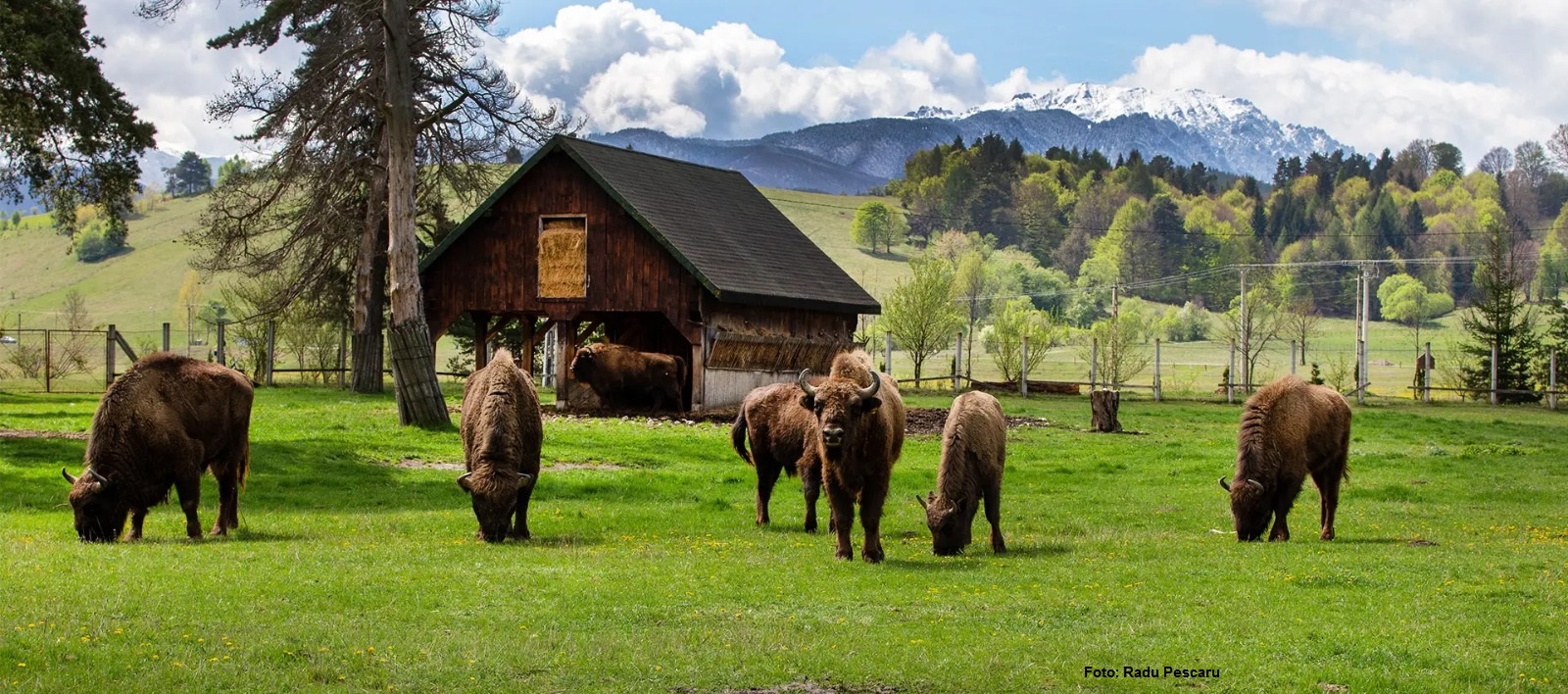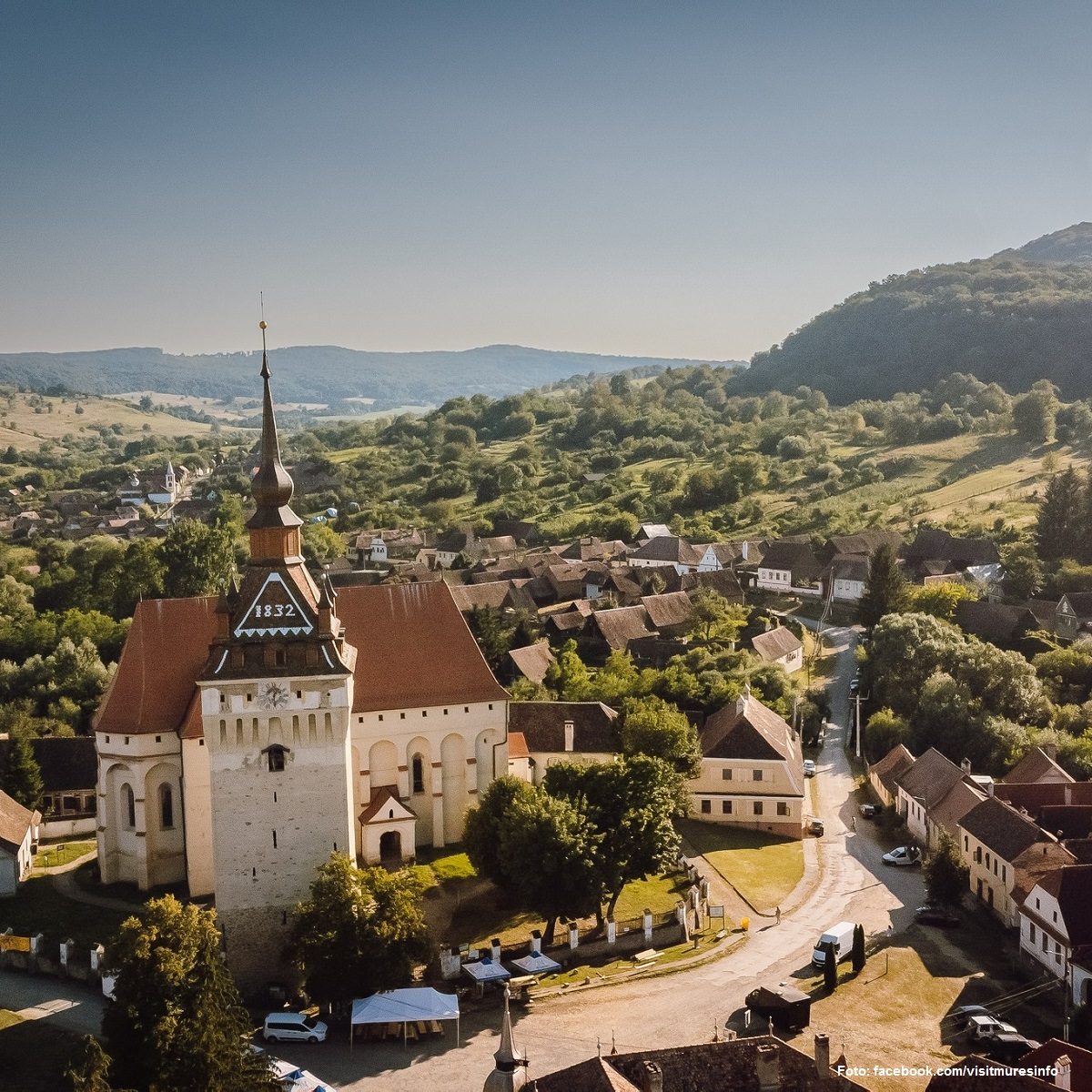The First Tourist Village in Romania
Warning: Trying to access array offset on null in /home/web/rri.ro/public/wp-content/themes/rri/template-parts/content.php on line 53

Warning: Trying to access array offset on null in /home/web/rri.ro/public/wp-content/themes/rri/template-parts/content.php on line 98
Daniel Onea,
17.08.2023, 14:00
Today we stop over in the center of Romania, on the southeastern slope of the Piatra Craiului mountain, at an altitude of 1,244 m, where we can discover the first tourist village in Romania, Sirnea. Here we can enjoy a fairy tale landscape, and we can discover an isolated and sprawling village, where we can relax, or go exploring the marked trails around. This is a special experience, which you can enjoy with Eugen Totilca, certified guide and activity coordinator with a tourism organization.
Along with the other six villages between the Bucegi massif and Piatra Craiului, Sirnea lies within Bran Country, as we were told by Eugen:
“In the year 1972, upon the initiative of Professor Nicolae Fruntes, in collaboration with the Romanian Academy, there was a project to promote villages and traditions in Romania, and Sirnea was picked for it too. Since this initiative started, it has been the only tourist village in Romania, it stayed that way, and we are very proud. The biggest resource and wealth of the village is its inhabitants, who are extraordinary people, accustomed to hardship, who appreciate and welcome tourists who come to our area to get to know them. The tourist objectives here are also very generous. The village of Sirnea, before WWI, was on the border between the Austro-Hungarian Empire and Wallachia. Here you can visit the Border Guard Road, where you can still see the border stones between the two former countries. This was the place in which Romania started WWI. Here we saw the first cannon shots and the first casualties that Romania suffered in order to liberate Transylvania.”
For the last few years, Eugen, together with the villagers, set up a center for tourism, as an interface between the tourists and the village and its people. There, they organize trips and guided tours:
“We can do simple reconnaissance trips, strolls through the forests, the hills, and the groves underneath Piatra Craiului. In the summer we have botanical tours, during which we pick plants and tell their stories, talking about the therapeutic values of each of them. We also have electric bike circuits. We have a fleet of 30 to 40 electric bikes that tourists ride, along with a guide. The guys live here. We also have a travel center, where we can organize both first lessons in horse riding, as well as horse rides on the surrounding hills. At the same time, we are a tourist information center. Here we receive the tourists and offer them information and the stories about the place, so that they can start feeling at home.”
Only 17 km away from Sirnea, we find the famous Bran Castle. This is a 14th century fortress, open to the public, very popular with tourists. They can discover here a monument that has aged exceptionally well, built on a crag, about 40 m above the groundline. The building has four levels, has four towers, and its special feature is a total lack of symmetry. The castle is extremely detailed and convoluted, with a series of small rooms, towers, and hallways, and many associate it with the Dracula myth. However, Sirnea has plenty of other activities to pick, that the trip should be longer in order to cover them all, along with all the tourist objectives around.
“Every weekend, we propose an event to cover outdoor activities, hiking, e-bike, horse riding, as well as the current seasonal activities of the villagers. During a weekend, we can visit a traditional household, helping with the work specific to that time of the year. In addition, we have strictly tourisy activities, such as an e-bike circuit, or horse strolls. Then, in the evening, we have a dinner with traditional food, to make the experience complete, in order to get to know the people and food of the village.”
The traditions are best carried forward from generation to generation by craftsmen. With their crafts, they are keeping alive traditional legends, symbols, and motifs. We asked tourist guide Eugen Totilca if we can still find craftsmen in Sirnea:
“Fortunately, they are still here, but they are fewer and fewer, because many have aged, and traditions are harder to pass down. However, we can still talk about crafts specific to the area, which are still practiced, even if mostly by older people. We still have a woodworker who makes wooden pitchforks and rakes, and shingles for roofs. We also have a lady who receives visitors who want to see how carpets are woven on a loom.”
As the first tourism village in Romania, Sirnea has a tradition of hospitality. We can still find there accommodation that has been there since communist times in Romania:
“These are units with tradition, with hosts that have received tens of thousands of tourists, and still do. These are farm B&Bs, but also hotels, with prices for all pockets. Without false modesty, there is not a single tourist that I have interacted with, in all the years Ive been dealing with tourism in Sirnea, who didnt leave as a friend. We even made an app, a virtual guide, which we use for the circuits that we have mapped, offering translation in a few foreign languages for our tourists.”
Among the future projects for tourism in Sirnea are marking further circuits, and new tours. Eugen Totilca told us that he plans to include in the tours visits to a sheepfold, for tourists to stop over and have some traditional shepherd dishes.
“At the center, we have a new project, which we started last year. In addition to horse riding, we can do equestrian therapy. We have a therapist friend who can do this. Our community wishes to, and is making every effort to, preserve traditions in Sirnea, promote them, and put Sirnea on the map as an ecotourism destination where adventure and tradition take pride of place, offering a complete experience to tourists who reach our village.”
The most convenient way of visiting this destination is to contact a tourists agency which can offer a complete package. The recently finalized Brasov-Ghimbav airport will become operational in June this year, and it is only 45 km away from Sirnea, Romanias first tourism village.






























